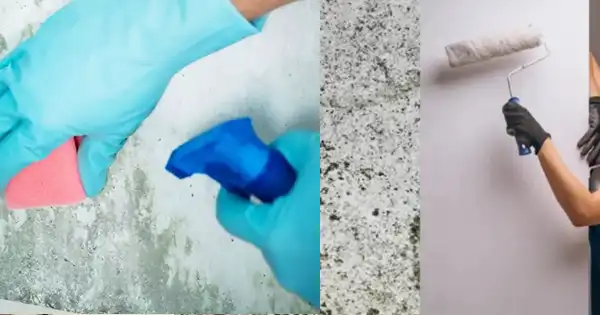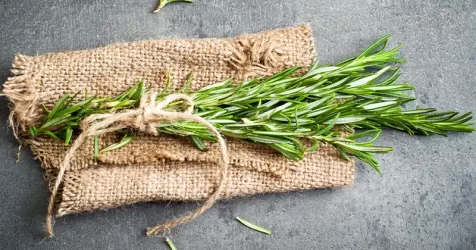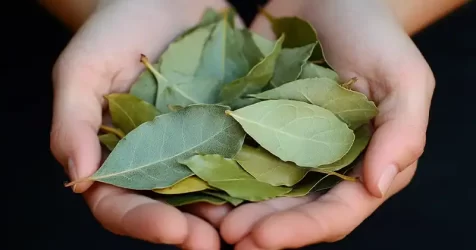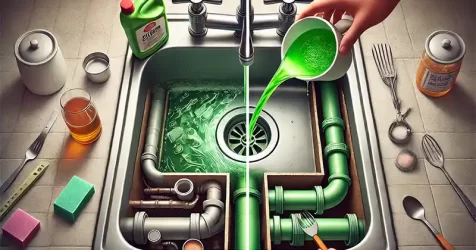Effortless and Effective: How to Repair a Moisture-Damaged Wall
Moisture stains and mold on walls or ceilings, whether brown, black, or green, can be visually unappealing and pose health risks. Health problems such as nasal congestion, irritation, throat itching, coughing, and sneezing can all be attributed to such moisture issues. Dealing with moisture damage is not to be taken lightly, but it also doesn’t have to break the bank.

Discover below a simple, budget-friendly DIY method to tackle this problem effectively.
Materials You’ll Need:
- Metal Spatula
- Bleach
- Spray Bottle
- Steel Wool
- Gloves (for protection)
- Waterproofing Agent
- Paint
- Face Mask
Step-by-Step Guide for Treating Moisture-Damaged Walls:
- Begin by wearing a face mask to avoid inhaling mold, dust, bleach, paint, and other particles.
- Use a metal spatula to carefully remove any loose paint that may have peeled due to moisture. The goal is to create a clean and even surface for the subsequent steps.
- Pour bleach into the spray bottle and generously spray it over the mold-affected areas. Safety goggles can be worn for added eye protection if desired.
- Put on gloves and use steel wool to scrub off all the mold completely.
- Rinse the wall with water to remove any remaining residues and allow it to dry thoroughly.
- Once you’re confident that the wall is completely dry, apply a coat of waterproofing agent using a roller or brush. Allow sufficient time for the wall to dry completely.
- Finish the job by painting the wall to your liking.
Additional Recommendations:
- Consider using anti-moisture paint to prevent future issues.
- Ensure proper ventilation throughout your home by leaving about 30 cm of space between furniture and walls to allow air circulation.
- Open windows to ventilate your home adequately, especially when using moisture-generating appliances. Avoid gas stoves, which produce heat and humidity.
- Hang your wet laundry outside instead of inside to prevent indoor humidity.
- In the bathroom, keep showers brief and reduce excessive steam, which adds to indoor moisture.
- In the kitchen, covering pots and pans while cooking can help minimize moisture release into the air.
By following these steps and recommendations, you can effectively repair moisture-damaged walls and prevent future issues.



















